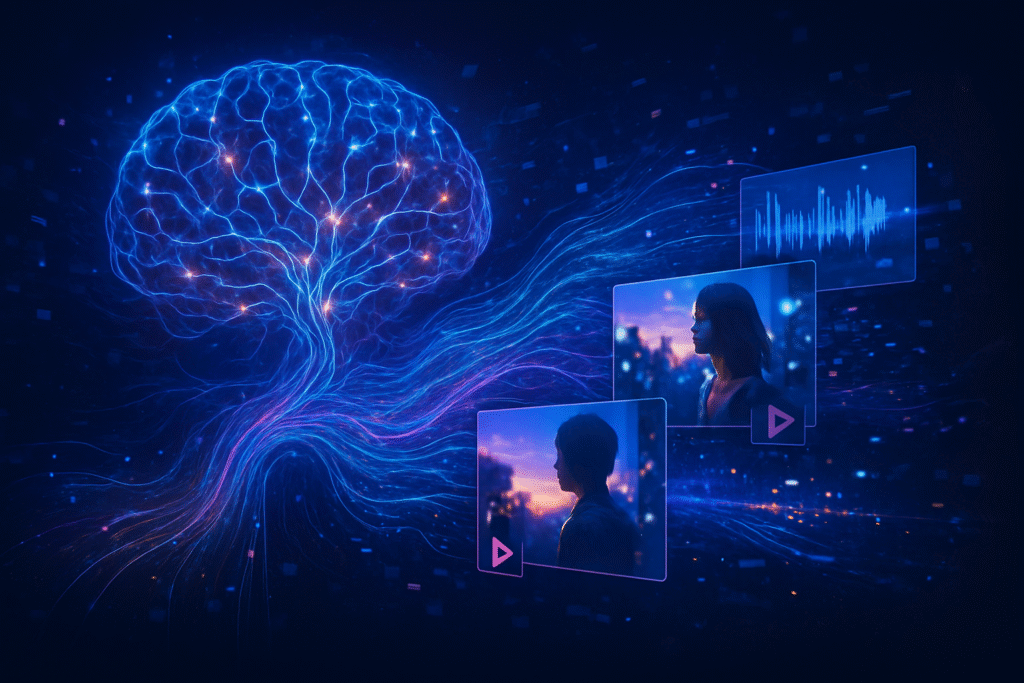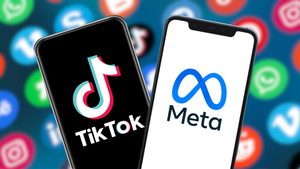
OpenAI's Sora video generation app has not just evolved; it has undergone a transformative leap with the recent launch of Sora 2 and its dedicated social platform. Unveiled around September 30, 2025, this latest iteration is already being hailed as a "GPT-3.5 moment for video," signaling a paradigm shift in how digital content is created and consumed. Sora 2's immediate significance lies in its unprecedented realism, synchronized audio capabilities, and strategic entry into the social media arena, democratizing high-quality video production and setting a new, formidable benchmark for the entire AI industry. Its swift rise to prominence underscores a relentless pursuit of generative AI excellence, promising to reshape creative workflows, challenge tech giants, and ignite a new era of digital expression.
Unprecedented Realism and Technical Prowess Redefine AI Video
Sora 2 represents a profound technical advancement, building upon the foundational capabilities of its predecessor, the original Sora model, which debuted in February 2024. This new version significantly enhances the model's understanding and simulation of the physical world, leading to strikingly realistic video outputs. Key technical specifications and improvements include:
A core advancement in Sora 2 is its dramatically improved physical accuracy and world modeling. Unlike earlier AI video models that often struggled with consistent physics—where objects might unnaturally morph or defy gravity—Sora 2 accurately models outcomes such as a basketball rebounding with plausible dynamics or the complex interactions of buoyancy. This "sharper physics" brings AI-generated content closer to real-world coherence, minimizing the "uncanny valley" effect. Furthermore, it boasts advanced user controllability and temporal consistency, allowing for intricate, multi-shot instructions while maintaining the state of the generated world, including character movements, lighting, and environmental details across different scenes.
A major differentiator for Sora 2 is its native integration of synchronized audio. Previous AI video models, including the original Sora, typically produced silent clips, requiring separate audio generation and tedious post-production. Sora 2 now seamlessly embeds dialogue, sound effects (SFX), and background music directly into the generated videos, significantly elevating immersion and completeness. The model also introduces a unique "Cameo" feature, enabling users to insert their verified likeness and voice into AI-generated scenes after a one-time identity verification. This, coupled with "Remixing Capabilities" that encourage collaborative modification of existing AI videos, fosters a vibrant and personalized creative community.
Initial reactions from the AI research community and industry experts have been a mix of awe and apprehension. Many are "technically impressed" by Sora 2's ability to simulate realistic physics, maintain temporal consistency, and integrate synchronized audio, calling it a "game-changer." It's seen as pushing AI video from "silent concept" to "social-ready draft," opening new avenues for ideation and short-form storytelling. However, the photorealistic capabilities, particularly the "Cameo" feature, have raised alarms about the potential for creating highly convincing deepfakes and spreading misinformation. The controversial "opt-out" copyright policy for training data has also drawn strong criticism from Hollywood studios, talent agencies (like WME), and artists' advocacy groups, who argue it places an undue burden on creators to protect their intellectual property.
Reshaping the AI Industry: Competition, Disruption, and Strategic Shifts
OpenAI's Sora 2 release has sent ripples across the AI industry, intensifying competition, promising significant disruption, and forcing a strategic re-evaluation among tech giants and startups alike. Its advanced capabilities set a new benchmark, compelling other AI labs to accelerate their own research and development.
Companies poised to benefit significantly are those capable of leveraging Sora 2's impending API to build innovative applications and services. This includes firms specializing in AI-powered content workflows, personalized marketing, and immersive storytelling. The "democratization of video production" offered by Sora 2 empowers smaller enterprises and individual creators to produce professional-quality content, potentially increasing demand for complementary services that facilitate AI video integration and management. Conversely, AI companies focused on less sophisticated or earlier generations of text-to-video technology face immense pressure to innovate or risk obsolescence.
For tech giants, Sora 2 presents a multifaceted challenge. Alphabet (NASDAQ: GOOGL), with its own video generation efforts like Veo 3, faces direct competition, compelling its DeepMind division to push the boundaries of foundational AI. Meta Platforms (NASDAQ: META), having recently launched its "Vibes" feed and "Movie Gen" (or its successor), is now in a head-on battle with Sora's social app for dominance in the digital advertising and social media space. While Adobe (NASDAQ: ADBE) may see disruption to traditional video editing workflows, it is also likely to integrate more advanced AI generation capabilities into its Creative Cloud suite. Microsoft (NASDAQ: MSFT), as a key investor and partner in OpenAI, stands to benefit immensely from integrating Sora 2's capabilities into its ecosystem, enhancing products like Bing and other enterprise tools.
Sora 2 creates a dual-edged sword for startups. Those specializing in AI infrastructure, content platforms, and blockchain stand to gain from increased investment and demand for AI-driven video. Startups building tools that enhance, manage, or distribute AI-generated content, or offer niche services leveraging Sora 2's API, will find fertile ground. However, startups directly competing in text-to-video generation with less advanced models face immense pressure, as do those in basic video editing or stock footage, which may see their markets eroded. OpenAI's strategic expansion into a consumer-facing social platform with "Cameo" and "Remix" features also marks a significant shift, positioning it beyond a mere API provider to a direct competitor in the social media arena, thereby intensifying the "AI video arms race."
A Broader Canvas: AI Landscape, Societal Impacts, and Ethical Crossroads
Sora 2's emergence signifies a major shift in the broader AI landscape, reinforcing trends toward multimodal AI and the democratization of content creation, while simultaneously amplifying critical societal and ethical concerns. OpenAI's positioning of Sora 2 as a "GPT-3.5 moment for video" underscores its belief in this technology's transformative power, akin to how large language models revolutionized text generation.
This breakthrough democratizes video creation on an unprecedented scale, empowering independent filmmakers, content creators, marketers, and educators to produce professional-grade content with simple text prompts, bypassing the need for expensive equipment or advanced technical skills. OpenAI views Sora 2 as a foundational step toward developing AI models that can deeply understand and accurately simulate the physical world in motion—a crucial capability for achieving Artificial General Intelligence (AGI). The launch of the Sora app, with its TikTok-like feed where all content is AI-generated and remixable, suggests a new direction for social platforms centered on pure AI creation and interaction.
However, the transformative potential of Sora 2 is shadowed by significant ethical, social, and economic concerns. A major worry is job displacement within creative industries, including videographers, animators, actors, and editors, as AI automates tasks previously requiring human expertise. The hyper-realistic nature of Sora 2's outputs, particularly with the "Cameo" feature, raises serious alarms about the proliferation of convincing deepfakes. These could be used to spread misinformation, manipulate public opinion, or damage reputations, making it increasingly difficult to distinguish authentic content from fabricated media. While OpenAI has implemented visible watermarks and C2PA metadata, the effectiveness of these measures against determined misuse remains a subject of intense debate.
The training of AI models on vast datasets, including copyrighted material, continues to fuel controversy over intellectual property (IP) rights. OpenAI's initial "opt-out" mechanism for content owners has faced strong criticism, leading to a shift towards more granular controls and a proposed revenue-sharing model for those who permit their content's use. Critics also warn of "AI slop"—a potential flood of low-quality, irrelevant, or manipulative AI-generated content that could dilute the digital information space and overshadow genuine human creativity. Compared to previous AI milestones like GPT models and DALL-E, Sora 2 represents the crucial leap from static image synthesis to dynamic, consistent video sequences, surpassing earlier text-to-video models that struggled with temporal consistency and realistic physics. This makes it a landmark achievement, but one that necessitates robust ethical frameworks and regulatory oversight to ensure responsible deployment.
The Horizon: Future Developments and Expert Predictions
The journey of OpenAI's Sora 2 has just begun, and its future trajectory promises even more profound shifts in content creation and the broader AI landscape. Experts predict a rapid evolution in its capabilities and applications, while also highlighting critical challenges that must be addressed.
In the near term, we can expect Sora 2 to become more widely accessible. Beyond the current invite-only iOS app, an Android version and broader web access (sora.com) are anticipated, alongside the crucial release of an API. This API will unlock a vast ecosystem of third-party integrations, allowing developers to embed Sora's powerful video generation into diverse applications, from marketing automation tools to educational platforms and interactive entertainment experiences. The "Cameo" feature, enabling users to insert their verified likeness into AI-generated videos, is likely to evolve, offering even more nuanced control and personalized content creation opportunities. Monetization plans, including a revenue-sharing model for rights holders who permit the use of their characters, will solidify, shaping new economic paradigms for creators.
Looking further ahead, the long-term applications of Sora 2 are vast and potentially transformative. Experts envision a future where AI-generated TV shows, films, and other creative projects become commonplace, fundamentally altering the economics and production cycles of the entertainment industry. The model's ability to act as a "general-purpose world simulator" could accelerate scientific discovery, allowing researchers to visualize and test complex hypotheses in virtual environments. Interactive fan fiction, where users generate content featuring established characters with rightsholder approval, could become a significant new form of entertainment. However, these advancements are not without their challenges. The ongoing debate surrounding copyright and intellectual property will intensify, requiring sophisticated legal and technological solutions. The risk of deepfakes and disinformation will necessitate continuous innovation in content provenance and detection, alongside enhanced digital literacy efforts. Concerns about "AI slop" – an overwhelming influx of low-quality AI-generated content – will push platforms to develop advanced moderation and curation strategies.
Experts predict that Sora 2 marks a "ChatGPT for creativity" moment, heralding a new form of communication where users become the stars of AI-created mini-movies, potentially making unreal videos the centerpiece of social feeds. This signals the beginning of an "AI video social media war" with rivals like Meta's Vibes and Character.AI's Feed. While the democratization of complex video productions offers unprecedented creative freedom, the potential for misuse and the erosion of trust in visual evidence are significant risks. The balance between user freedom and rights-holder compensation will redefine creative industries, and the influx of AI-generated content is predicted to make the future of the attention economy "more chaotic than ever."
A New Chapter in AI History: The Dawn of AI-Native Video
OpenAI's Sora 2, launched on September 30, 2025, represents a monumental leap in artificial intelligence, ushering in an era where high-quality, emotionally resonant, and physically accurate video content can be conjured from mere text prompts. This release is not merely an incremental update; it is a "GPT-3.5 moment for video," fundamentally reshaping the landscape of content creation and challenging the very fabric of digital media.
The key takeaways from Sora 2's debut are its groundbreaking synchronized audio capabilities, hyper-realistic physics simulation, and its strategic entry into the consumer social media space via a dedicated app. These features collectively democratize video production, empowering a vast new generation of creators while simultaneously intensifying the "AI video arms race" among tech giants and AI labs. Sora 2's ability to generate coherent, multi-shot narratives with remarkable consistency and detail marks it as a pivotal achievement in AI history, moving generative video from impressive demonstrations to practical, accessible applications.
The long-term impact of Sora 2 is poised to be profound and multifaceted. It promises to revolutionize creative industries, streamline workflows, and unlock new forms of storytelling and personalized content. However, this transformative potential is intrinsically linked to significant societal challenges. The ease of generating photorealistic video, particularly with features like "Cameo," raises urgent concerns about deepfakes, misinformation, and the erosion of trust in visual media. Debates over intellectual property rights, job displacement in creative sectors, and the potential for "AI slop" to overwhelm digital spaces will continue to dominate discussions, requiring vigilant ethical oversight and adaptive regulatory frameworks.
In the coming weeks and months, the world will be watching several key developments. Pay close attention to the broader availability of Sora 2 beyond its initial invite-only iOS access, particularly the release of its API, which will be critical for fostering a robust developer ecosystem. The ongoing ethical debates surrounding content provenance, copyright policies, and the effectiveness of safeguards like watermarks and C2PA metadata will shape public perception and potential regulatory responses. The competitive landscape will intensify as rivals like Google (NASDAQ: GOOGL) and Runway ML respond with their own advancements, further fueling the "AI video social media war." Finally, observe user adoption trends and the types of viral content that emerge from the Sora app; these will offer crucial insights into how AI-generated video will redefine online culture and the attention economy. Sora 2 is not just a technological marvel; it's a catalyst for a new chapter in AI history, demanding both excitement for its potential and careful consideration of its implications.
This content is intended for informational purposes only and represents analysis of current AI developments.
TokenRing AI delivers enterprise-grade solutions for multi-agent AI workflow orchestration, AI-powered development tools, and seamless remote collaboration platforms.
For more information, visit https://www.tokenring.ai/.





